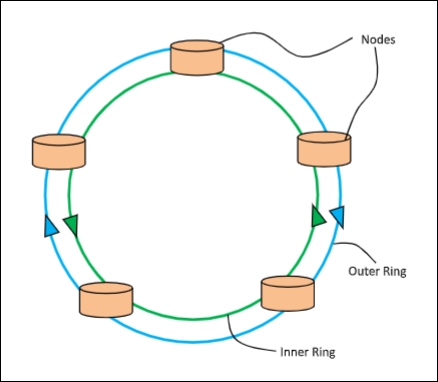
 Data Structure
Data Structure Networking
Networking RDBMS
RDBMS Operating System
Operating System Java
Java MS Excel
MS Excel iOS
iOS HTML
HTML CSS
CSS Android
Android Python
Python C Programming
C Programming C++
C++ C#
C# MongoDB
MongoDB MySQL
MySQL Javascript
Javascript PHP
PHP
- Selected Reading
- UPSC IAS Exams Notes
- Developer's Best Practices
- Questions and Answers
- Effective Resume Writing
- HR Interview Questions
- Computer Glossary
- Who is Who
Resilient Packet Ring (RPR) - IEEE 802.17
Resilient Packet Ring (RPR), standardized as IEEE 802.17, is a protocol standard for data transmission over fiber optic ring networks, that operates in the Media Access Control (MAC) layer of the Open Systems Interconnection (OSI) model. It provides a packet based transmission facility, with the aim of improving efficiency of Ethernet and IP services. RPR provides improved bandwidth utilization and throughput, greater speed of deployment, and optimized equipment and operational costs.
Working Principle
The stations in a RPR are connected by dual counter rotating fiber optic rings called ringlets. Transmission occurs along both the rings. This helps to utilize the total available bandwidth as compared to systems where a secondary ring is kept only for backup purpose. The following diagram depicts the system -

Data transmission and transmission of control signals occur along both the ringlets. The control signal is carried in the opposite direction of the data traffic whose information it carries. For example if the outer ring carries data, its control information is carried by the inner ring.
An RPR node can dynamically negotiate bandwidth issues with other nodes. It is a Quality of Service (QoS) aware facility that can schedule traffic in order of their priorities. This avoids congestion and minimizes failed transmissions. If a link is broken in any ringlet, then data transmission continues through methods of steering and wrapping. In steering, all nodes are notified of the broken link and they reroute their traffic. In wrapping, the data traffic is looped back at the last node before the link breakage and routed to the destination station via the other ringlet.

